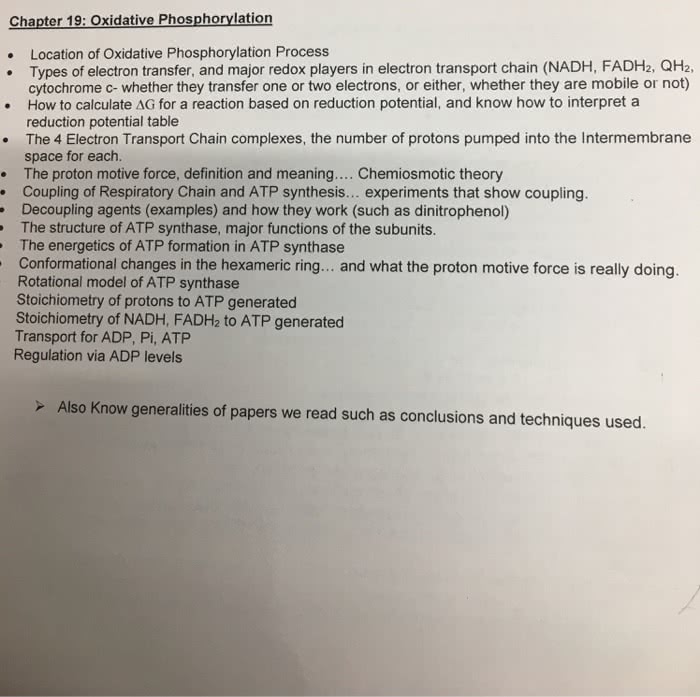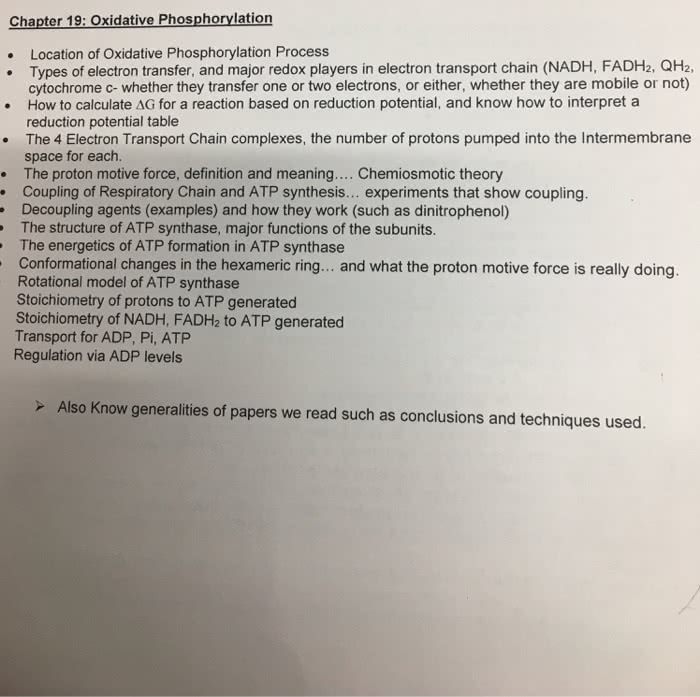BCMB 3100 Lecture Notes - Lecture 18: Cellular Respiration, Citric Acid Cycle, Electrochemical Gradient
Document Summary
Get access


Related Documents
Related Questions
QUESTION 1
Which of the following is the correct order of the three stages of cellular respiration?
| a. | Krebs cycle, glycolysis, electron transport | |
| b. | electron transport, glycolysis, Krebs cycle | |
| c. | Krebs cycle, electron transport, glycolysis | |
| d. | glycolysis, Krebs cycle, electron transport | |
| e. | electron transport, Krebs cycle, glycolysis |
1 points
QUESTION 2
Consider a bacterial cell that performs anaerobic respiration. If that bacterial cell had access to six molecules of glucose to use, how many ATP molecules would it be able to produce?
| a. | 2 | |
| b. | 34 | |
| c. | 36 | |
| d. | 6 | |
| e. | 12 |
1 points
QUESTION 3
The oxygen that organisms need to live is used exclusively in which of the following metabolic pathways?
| a. | Electron transport chain | |
| b. | Anaerobic respiration | |
| c. | Glycolysis | |
| d. | Krebs cycle | |
| e. | ATP-Synthase |
1 points
QUESTION 4
The electron transport chain uses the energy in NADH and FADH2 to pump H+ ions from the matrix to the innermembrane space. The H+ gradient is then used to power ATP-Synthase. Enough H+ is pumped from the energy in a molecule of NADH to produce ______ ATP molecules, while enough H+ is pumped from the energy in a FADH2 molecule to produce ______ ATP molecules.
| a. | three; two | |
| b. | three; three | |
| c. | two; two | |
| d. | two; three |
1 points
QUESTION 5
Which of the following list contains only products of cellular respiration?
| a. | glucose, oxygen, ADP | |
| b. | ATP, carbon dioxide | |
| c. | oxygen, ADP, carbon dioxide | |
| d. | ATP, glucose, oxygen | |
| e. | glucose, ATP |
1 points
QUESTION 6
What powers the enzyme ATP-Synthase?
| a. | NADH molecules | |
| b. | oxygen (O2) | |
| c. | ATP | |
| d. | NADH and FADH2 molecules | |
| e. | The H+ gradient between the matrix and inner-membrane space |
1 points
QUESTION 7
Organisms exist which are able to survive using only glycolysis (i.e. without using oxidative phosphorylation).
True
False
1 points
QUESTION 8
Each ADP molecule contains ________ phosphates, and each ATP molecule contains ________ phosphates.
| a. | three; three | |
| b. | two; two | |
| c. | one; two | |
| d. | two; three | |
| e. | one; three |
1 points
QUESTION 9
Adding a phosphate group to ADP to form ATP is an endergonic reaction.
True
False
1 points
QUESTION 10
The majority of ATP produced during cellular respiration is produced during glycolysis.
True
False
1 points
QUESTION 11
Glycolysis occurs:
| a. | on enzymes located in the inner-membrane. | |
| b. | in the cytosol. | |
| c. | in the inner-membrane space. | |
| d. | in the nucleus of the cell. | |
| e. | in the matrix of mitochondria. |
1 points
QUESTION 12
Muscle soreness associated with strenuous exercise is due to:
| a. | the production of alcohol during anaerobic respiration. | |
| b. | a buildup of lactic acid. | |
| c. | an excessive amount of ATP that builds up during exercise. | |
| d. | the large amounts of CO2 building up in the muscle. |
1 points
QUESTION 13
A required reactant for glycolysis is:
| a. | the electron transport chain. | |
| b. | carbon dioxide. | |
| c. | oxygen. | |
| d. | NAD+. | |
| e. | mitochondria. |
1 points
QUESTION 14
NADH is produced in all of the following except:
| a. | the electron transport chain. | |
| b. | the Krebs cycle. | |
| c. | glycolysis. |



